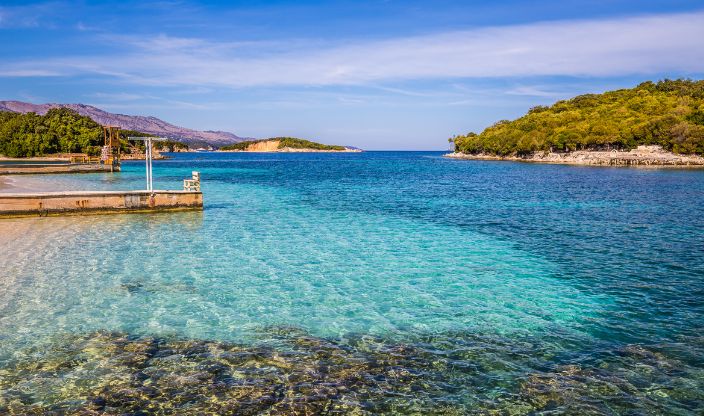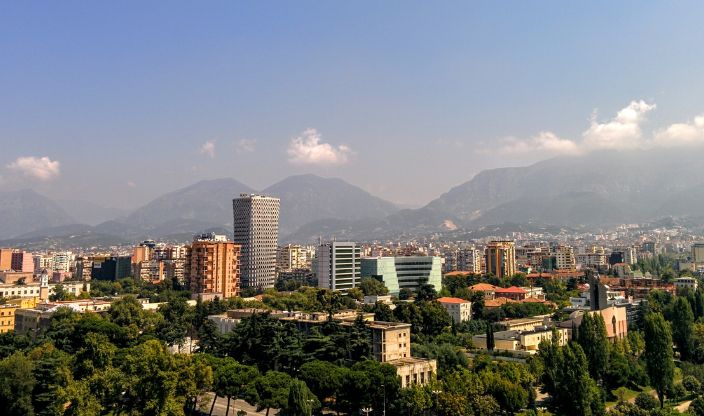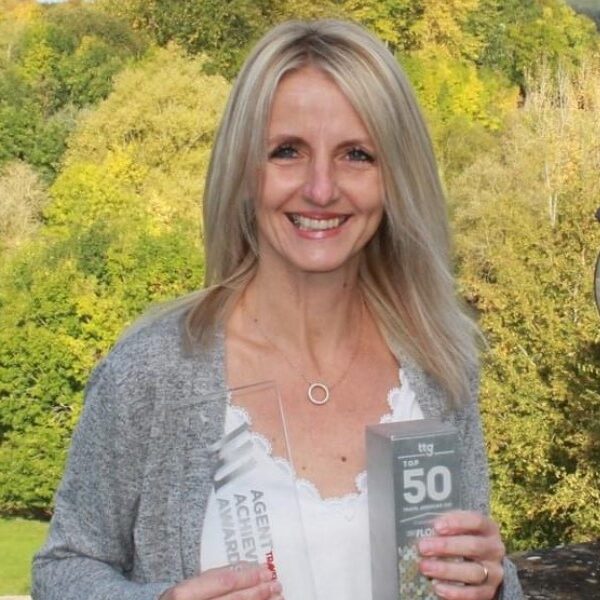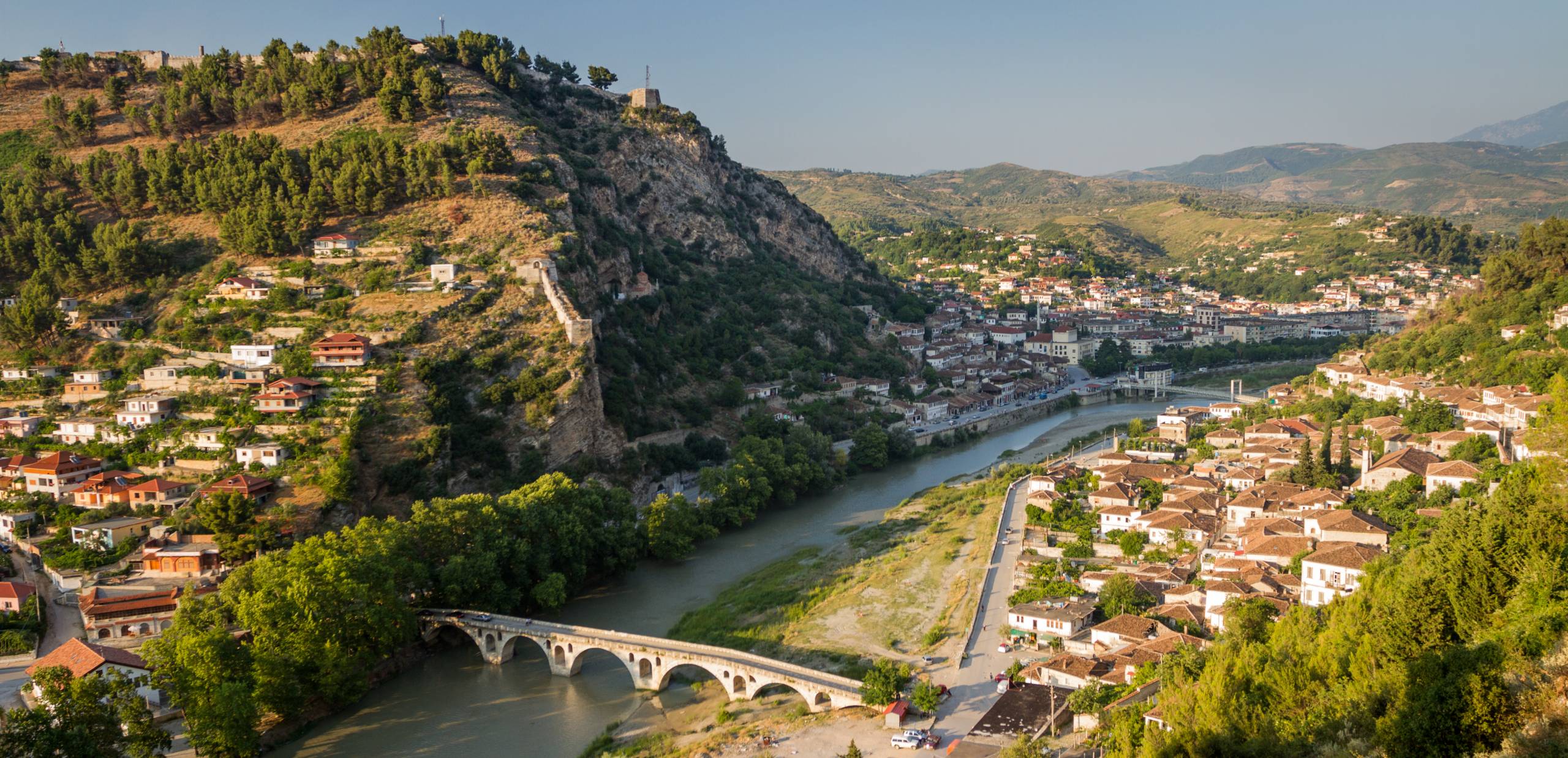Introducing Albania
With an unspoilt Mediterranean flair, Albania is a ravishing destination for anyone looking for a relaxing beach holiday or an adventurous travel adventure. You’ll come across some fascinating places: old bunkers line the sandy beaches, castles adorn the charming countryside, and beautiful lakes call to those who enjoy water sports, such as Lake Shkodr in the country’s northwest or Lake Ohrid, shared with Macedonia). Visit the intriguing museums in the buzzing capital Tirana before stopping by a cafe in the vibrant Blloku neighbourhood for a robust dark coffee. Albania may be a small country, but it is an untamed destination that is becoming increasingly popular with European travellers looking for the Med’s hidden wonders.
Albania is a nation in southern Europe that is situated on the Adriatic Sea’s southern side. Tirana (Tiran) is the capital, and the country is bordered to the northwest by Montenegro, to the northeast by Kosovo, to the east by North Macedonia, to the southeast and south by Greece, and to the west and southwest by the Adriatic and Ionian seas. Italy, Albania’s nearest neighbour to the west, is located about 50 miles (80 km) away across the Adriatic Sea. Albania is approximately 210 miles (340 km) long and 95 miles (150 km) wide (150 km).
The ideal months to visit Albania are from April to June and from September to October since you’ll evade the sweltering coastal hot weather and the icy mountainous winters. These times are also great for sightseeing, water sports, strolling, cycling, and lying on the beach. If you prefer to travel during the summer months, when the weather is hot, there are wonderful beaches along its Mediterranean coastline.
Healthy ingredients including vegetables, fruit, fish, dairy, and meat are the foundations of Albanian cuisine. The most common cooking oil used in traditional Albanian recipes is olive oil. Herbs are also frequently employed, giving meals a unique and delectable flavour. The most common ingredients in dishes are onions and garlic.
Commonly utilised meats include beef, lamb, pork, and chicken. Although they are present in many traditional Albanian recipes, there are also plenty of vegetarian options.
Unquestionably, one of the most traditional foods in Albania is fergese. Tomato sauce, cottage cheese, green peppers, and garlic make up most of the dish. Since many Albanians enjoy eating the dish after it has cooled for two to three hours, it is occasionally referred to as summer stew. Another typical Albanian dish is pispili. Leeks or spinach and cornmeal are used to make it. Local variations exist in the cornbread’s thickness. It can vary between being thin, like shortbread, and thicker, and more consistent, like sponge cake. Lamb baked in yoghurt is a beloved traditional meal served frequently for lunch in Albania. Known as Elbasan tava after the Albanian city it originated in, it is well-known throughout the Balkan region.
Even though lamb is the preferred meat for tave kosi, chicken can also be used. Along with the meat, the yoghurt is baked with the rice and eggs.
Albanians refer to their nation as Shqiperia and themselves as shqiptare, a term that is sometimes translated as “sons of eagles” but may indicate “those affiliated with the shqip (i.e., Albanian) language”. Most of them believe that they are descended from the ancient Illyrians, who originated in central Europe and moved south to present-day Albania around 2000 BCE. The Albanians were finally subjugated by the Ottoman Turks in the 15th century after being repeatedly invaded by Visigoths, Huns, Bulgars, and Slavs for centuries. Ottoman rule isolated Albania from Western civilisation. But, in the late 19th century, Albania started to free itself from Ottoman influence and rediscover its former affinities and shared interests with the West. Albania, which was a monarchy between the two World Wars, emerged from the bloodshed of World War II as a communist state that intensely scrutinized its sovereignty and in which the governing party had authority over practically all elements of daily life. Yet, as communist governments around the world fell in 1989, new social movements and democratic political parties arose in Albania.
Lake Skadar
One of Albania’s most picturesque locations is Lake Skadar, and the children will enjoy it. There are a variety of diverse wildlife species, enormous lakes, historical sites, forests and small communities to explore as well.
River Drin
Children will enjoy spotting the numerous bird species and other wildlife that reside in this region of the nation. You’ll see enormous canyons and towering cliff tops, which will surely excite and impress young kids and teenagers.
Berat Castle
With a history of roughly 2500 years, Berat Castle provides children with lots of room to explore while learning about it. Berat Castle is a fantastic location to explore unrestrictedly and away from the hustle and bustle of the city.
Recommended Albania Specialists
Top Locations in Albania























